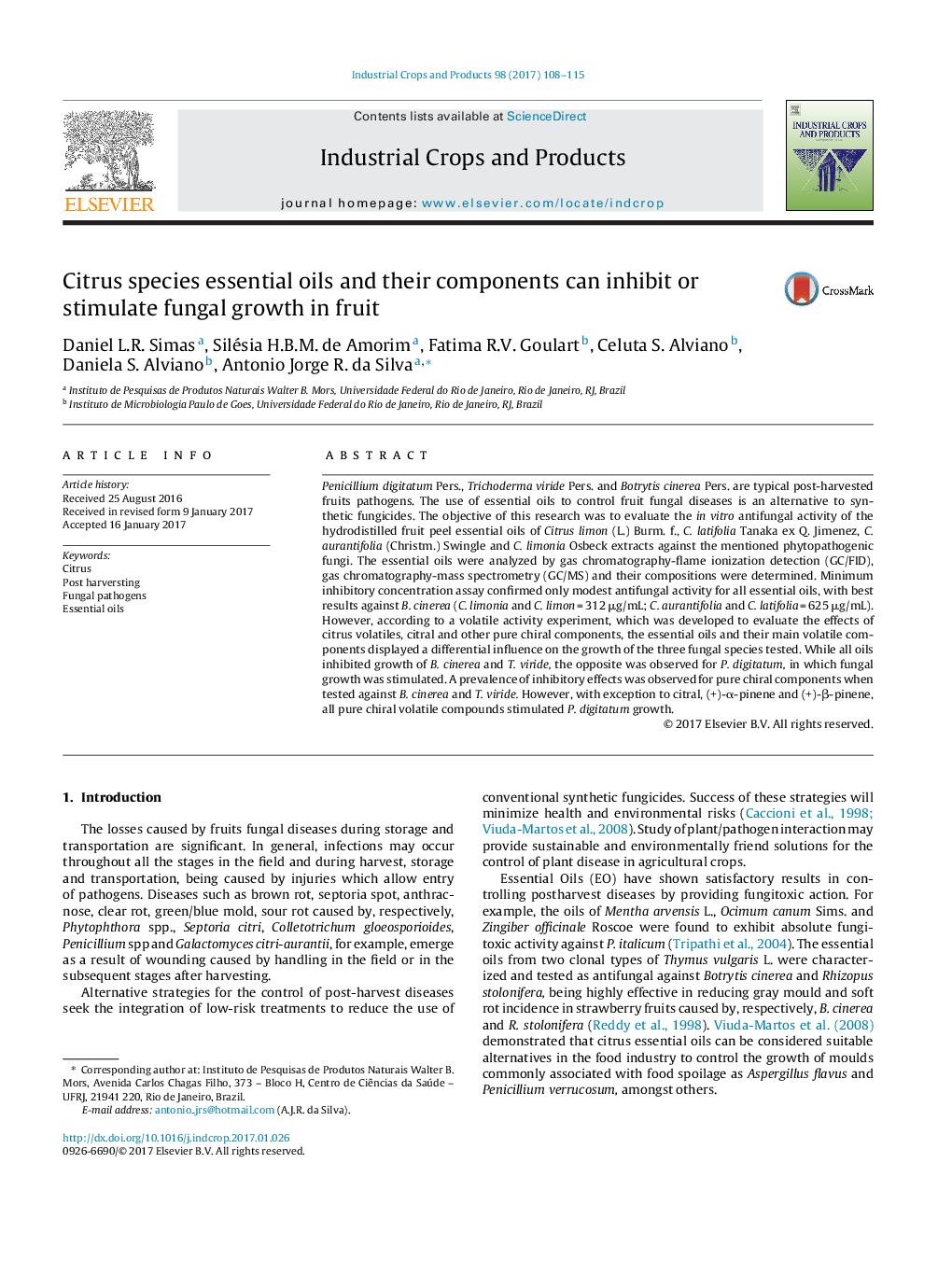| Article ID | Journal | Published Year | Pages | File Type |
|---|---|---|---|---|
| 5762203 | Industrial Crops and Products | 2017 | 8 Pages |
Abstract
Penicillium digitatum Pers., Trichoderma viride Pers. and Botrytis cinerea Pers. are typical post-harvested fruits pathogens. The use of essential oils to control fruit fungal diseases is an alternative to synthetic fungicides. The objective of this research was to evaluate the in vitro antifungal activity of the hydrodistilled fruit peel essential oils of Citrus limon (L.) Burm. f., C. latifolia Tanaka ex Q. Jimenez, C. aurantifolia (Christm.) Swingle and C. limonia Osbeck extracts against the mentioned phytopathogenic fungi. The essential oils were analyzed by gas chromatography-flame ionization detection (GC/FID), gas chromatography-mass spectrometry (GC/MS) and their compositions were determined. Minimum inhibitory concentration assay confirmed only modest antifungal activity for all essential oils, with best results against B. cinerea (C. limonia and C. limon = 312 μg/mL; C. aurantifolia and C. latifolia = 625 μg/mL). However, according to a volatile activity experiment, which was developed to evaluate the effects of citrus volatiles, citral and other pure chiral components, the essential oils and their main volatile components displayed a differential influence on the growth of the three fungal species tested. While all oils inhibited growth of B. cinerea and T. viride, the opposite was observed for P. digitatum, in which fungal growth was stimulated. A prevalence of inhibitory effects was observed for pure chiral components when tested against B. cinerea and T. viride. However, with exception to citral, (+)-α-pinene and (+)-β-pinene, all pure chiral volatile compounds stimulated P. digitatum growth.
Keywords
Related Topics
Life Sciences
Agricultural and Biological Sciences
Agronomy and Crop Science
Authors
Daniel L.R. Simas, Silésia H.B.M. de Amorim, Fatima R.V. Goulart, Celuta S. Alviano, Daniela S. Alviano, Antonio Jorge R. da Silva,
